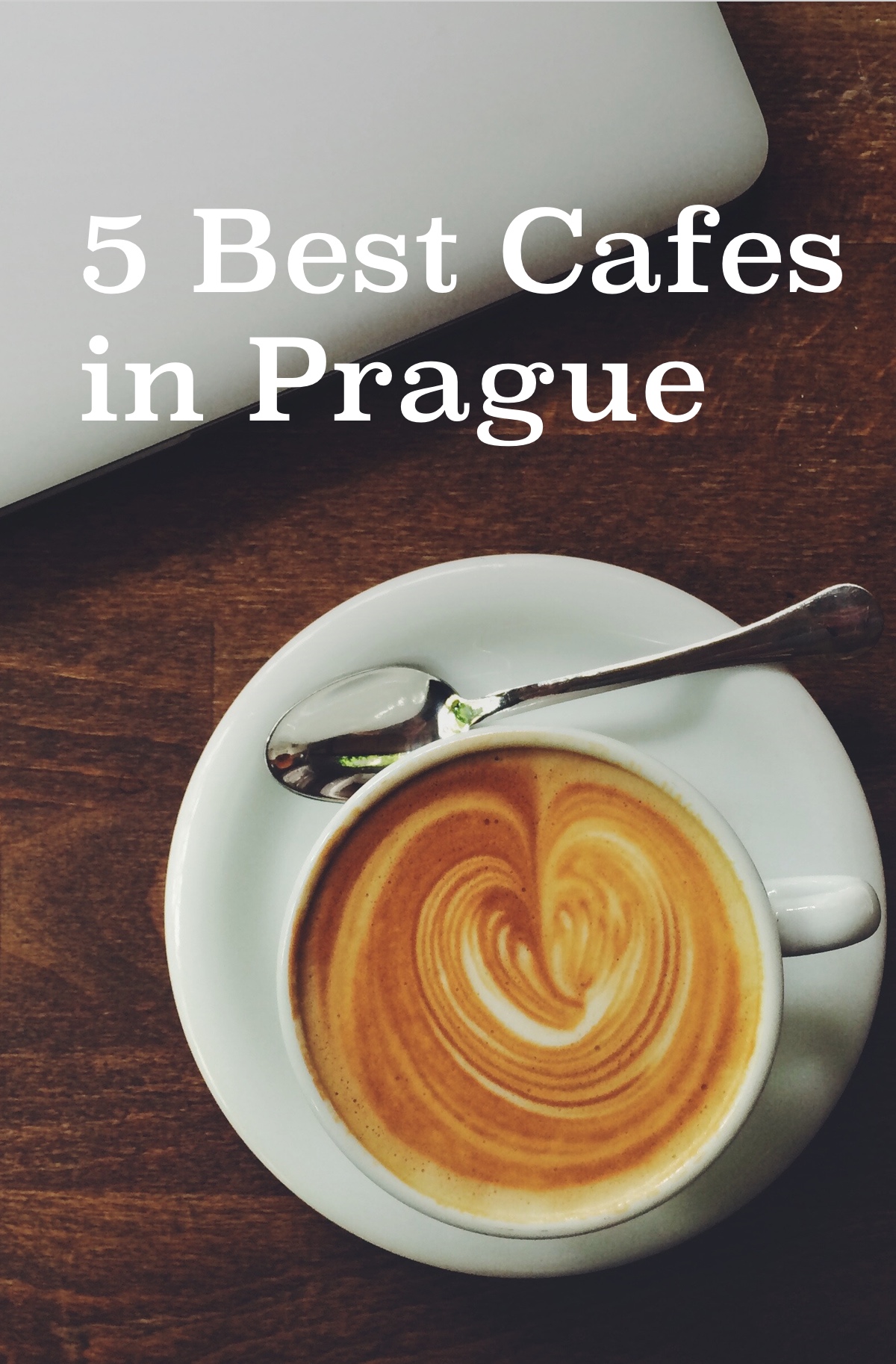
Hidden amongst Prague’s Golden Age, Rennaissance, and Baroque treasures are the pre-war 19th-century cafes. These cafes were started during a period of growth in Prague – The National Revival, per BBC’s article Prague’s historic coffeehouses, the temples of caffeine, creativity, and conversation.
Cafes were the meeting places for intellectuals, writers, artists, and politicians – inspirational venues to pick each other’s brains and discover Czech culture and history. At any given day, if you were living at that time period, you might have seen Josef Kapek, Franz Kafka, and Albert Einstein in these cafes. However, World War II changed everything. Meeting places like cafes were forced to close and were converted into workplaces, offices, and shops.
Not many pre-war cafes survived. Those that are still in existance are restored and brought back to their original purpose. I made my pilgrimage to four pre-war cafes and one old tavern with the help of Marek Cervey, a docent for Context Travel.
Cafe Savoy
Walking into Cafe Savoy at 12:45 p.m., I saw a sea of people seated, and some crowding around a small reception stand, waiting for their seats. Thinking I could have a head start by ordering coffee before the docent arrived at 1 p.m., I went in and asked. Apparently, seats were not available until much later. The good news was the docent’s name was on the list of people having reserved seats.
The cafe features gorgeous interiors with a Neo-Renaissance ceiling dating back to 1893. Located on the West Bank of the Vltava River, across the Old Town, Cafe Savoy still boasts of the original ceiling and has regained its past fame and glory. On the menu are 14 types of coffee – espresso, espresso macchiato, cappuccino, flat white, Americano, filter coffee, Savoy cafe au lait, cafe melange, Wiener Einspanner, chestnut coffee, caramel affogato, Irish coffee and iced coffee.
I ordered cafe melange (a popular coffee in Vienna served with milk and whipped cream) and a piece of babovka, Czech’s bundt cake with nuts, a traditional Sunday lunch classic dessert.
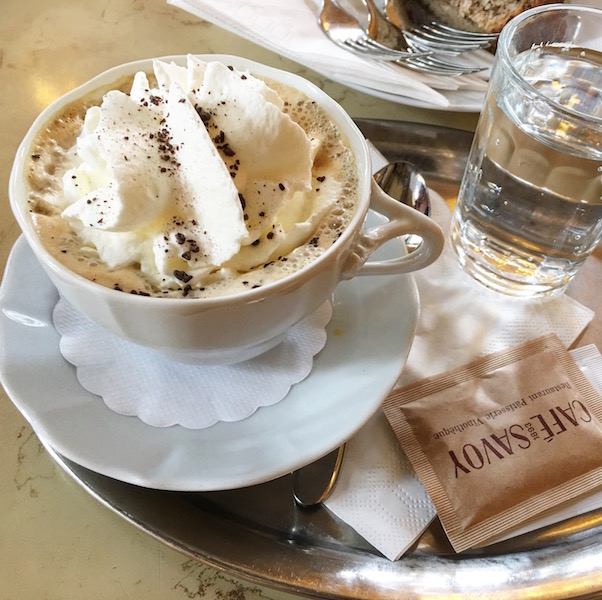
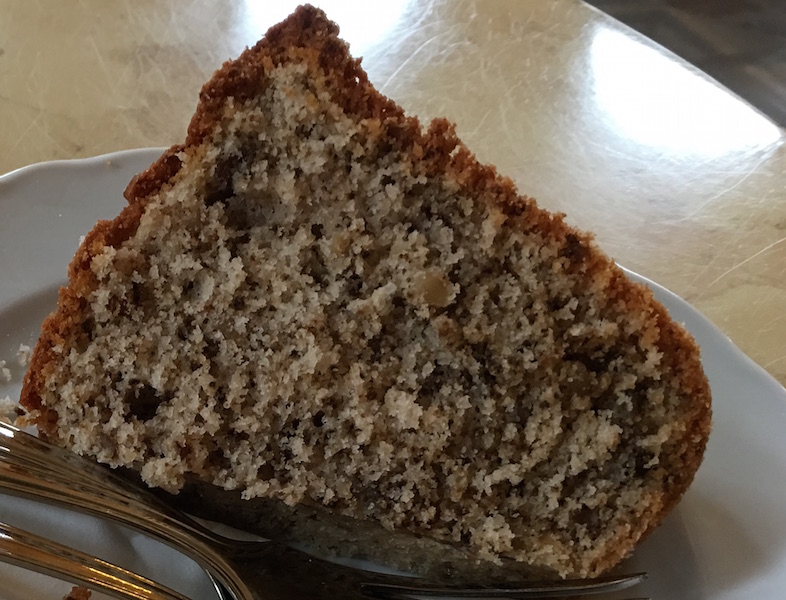
The walk across Most Legii
From Cafe Savoy, we walked across the Most Legii (The Legion Bridge), a granite bridge for vehicles and pedestrians to Cafe Slavia, located across the street from the National Theatre with views of Charles Bridge.

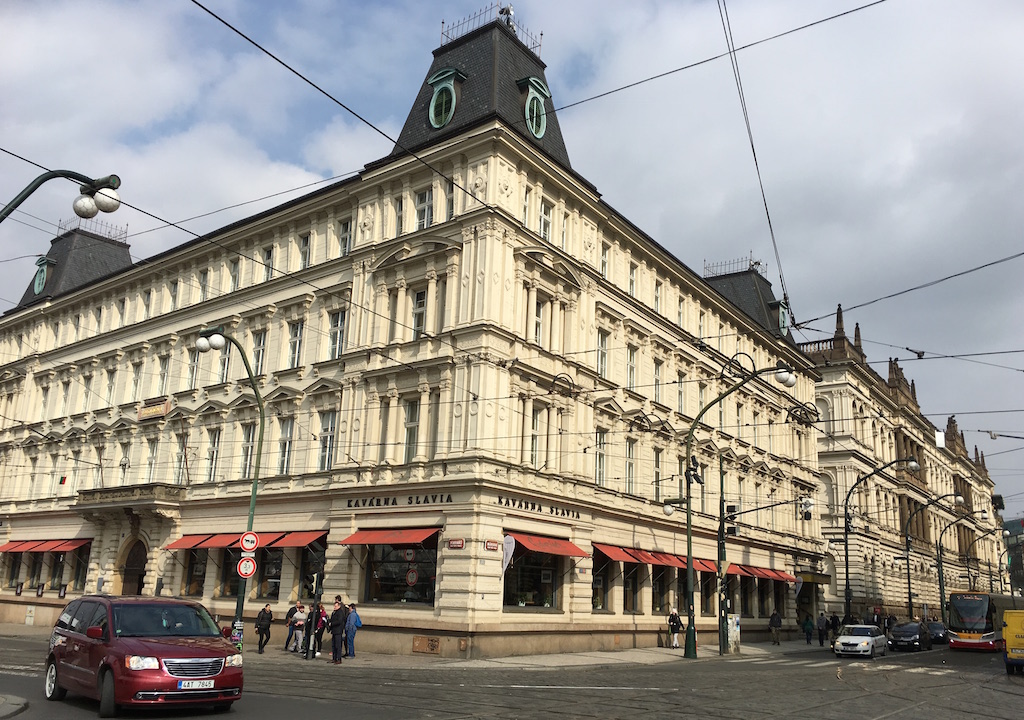
Cafe Slavia
Deemed as a Prague institution since it first started in 1884, Cafe Slavia is the place were stories, paintings, music, ideas happened. It was Prague’s most prominent cafe in the 1920s, the period of Czech civic pride, and Czech literary movement. It stayed open throughout World War II and the communist era.
Inside are large bay windows offering views of Vltava River, Petrin Hill and the Observatory Tower, a mini version of Paris’ Eiffel Tower. Writers favored the bay windows facing the tower because it reminded them of Paris’ Seine River and Eiffel Tower. On another side are views of the National Theater, Charles Bridge, the castle and Mala Strana. Guests can sit with a cup of coffee and admire picture perfect views from inside.
The Art Deco interior boasts of many artworks and one of which is the most famous, The Abstinthe Drinker, a 1901 oil-painting by Viktor Oliva. It is a green imaginary nude woman sitting on a table with a man sitting on a chair.
Cafe Slavia has a special room separated from the main room just for workers and artists from the National Theatre.
Artists, intellectuals, writers, painters, and political dissidents gathered in the cafe. Today if you’re seeking inspiration you may find it in Cafe Slavia. Sit on the chairs and eat and drink coffee at the tables that were once used by Jaroslav Seifert, Jan Zrzavy, Bedrich Smetana, Jiri Kolar and Vaclav Havel. Havel was a playwright and the leader in the 1989 Velvet Revolution and Cafe Slavia was his favorite cafe in Prague. Hilary Clinton was there too (see photo below).
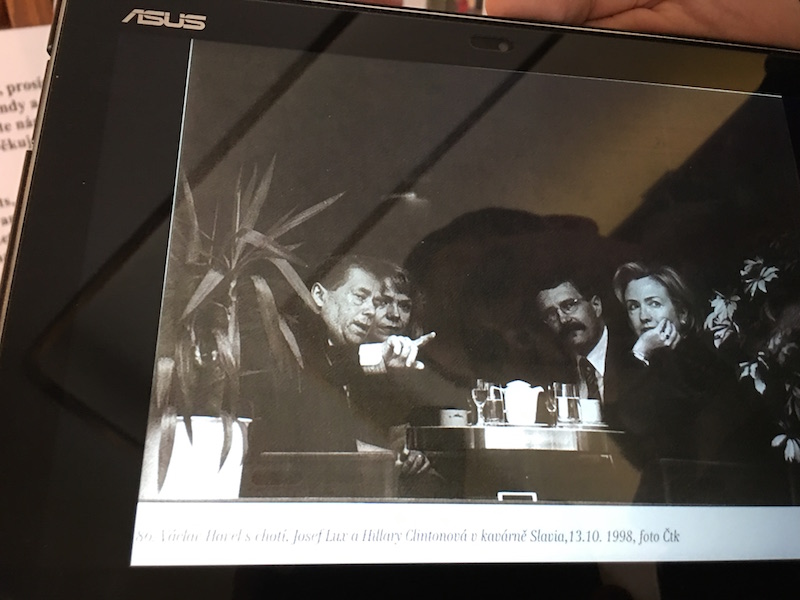

Walking to Cafe Louvre on Narodni Street
Leaving Cafe Slavia and walking along Narodni Street, we came across the Velvet Revolution monument and a few examples of Art Nouveau buildings. The monument is less than a 10 minute walk from Cafe Slavia. The peaceful revolution on November 17, 1989 ended communism in the Czech Republic.
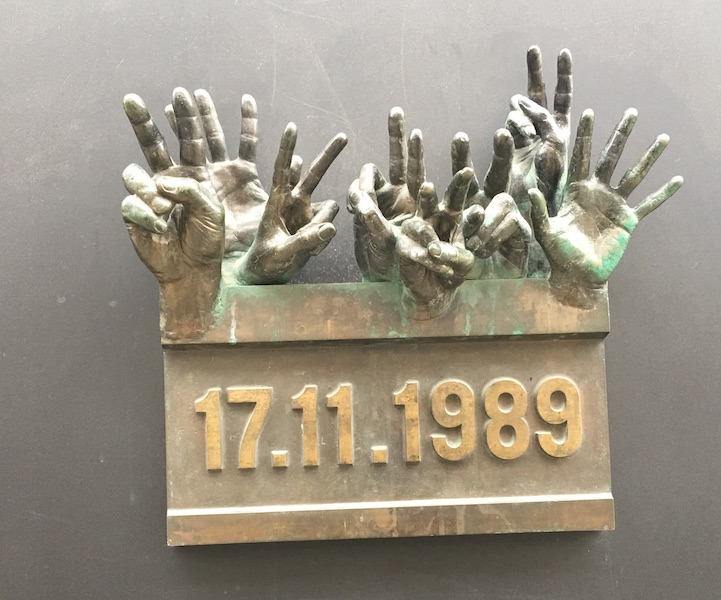
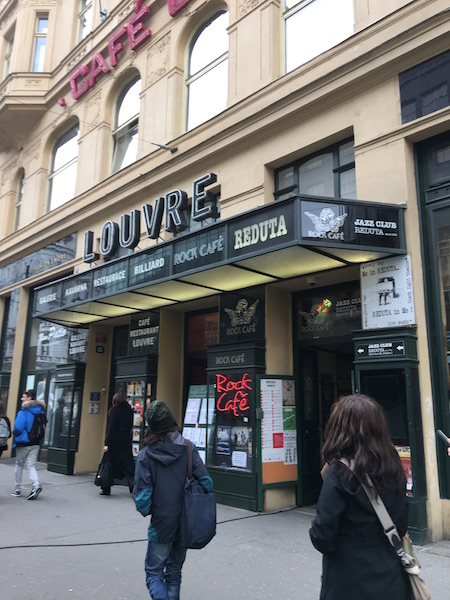
Cafe Louvre
Located about a 10-minute walk from Cafe Slavia, since its beginning in 1902, Cafe Louvre served as a meeting place for writers and intellectuals. Frequent guests included Albert Einstein, Franz Kafka, Karel Capek, and Hugo Bergmann. Cafe Louvre was one of the few cafes that allowed female customers in the 19th century.
In 1948 it was forced to close by the Communist coup where the cafe fixtures were thrown out the windows onto Narodni Street. The cafe was completely restored with new fixtures in 1992 and now serves as one of the top cafes in Prague. This Art Nouveau cafe, located on the second floor had an Austrian cafe feel.
We like the interactive map in the lobby with a display of over 150 cafes that were in Prague before the war. You can press the button and the little bulbs will light up indicating the location of the cafe you wish to locate. Unfortunately, many of these cafes are no longer in Prague due to war, communism, and Starbucks.
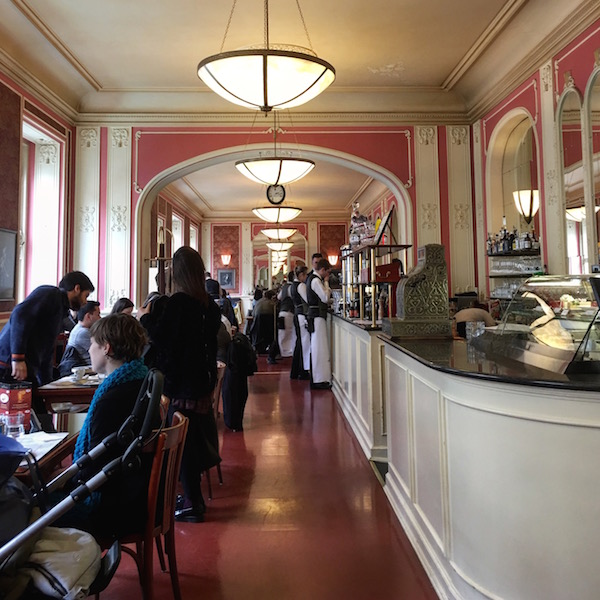

Walking towards Old Town to U Dvou Kocek (Two Cats)
From Cafe Louvre we walked towards Old Town passing by an apartment building that Mozart lived in when he was performing Don Giovanni in the Estates Theatre. Marek wanted us to take a break from coffee and dessert. So he brought us to one of the oldest pub cafes in Prague – U Dvou Kocek.
U Dvou Kocek
At U Dvou Kocek (Two Cats) we had typical Czech snacks and beer. It is an old-school Czech ‘smoking is allowed’ pub. We tried traditional Czech pub snacks: pickled hermelin (pickled cheese marinated in onion, garlic, hot peppers, spices and oil) and utopenec (soft sausage with onions, vinegar, and spices).
U Dvou Kocek was known originally as House of the Three Ostriches but the name was changed to Two Cats in 1927. This 400-year-old pub was a good stop to experience an old establishment that allows smoking where the customers were mainly locals. The food and drinks were cheap too.

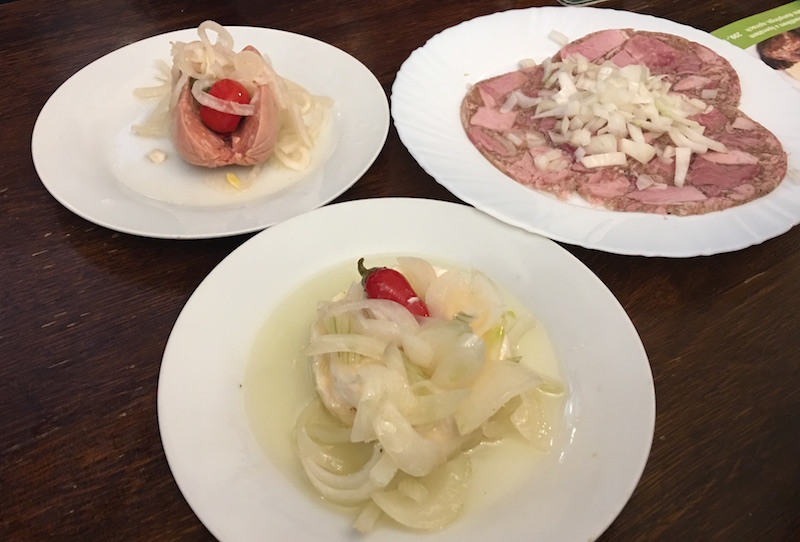
Walking to Cafe Oriente
To get a taste of deli food in Prague, we stopped at Lahudkarstvi Svacek at Rytirska 528/1 Stare Mesto (Old Town). There was a selection of Moravian wine, sausages, sandwiches, cold cuts, sauces, and beer.
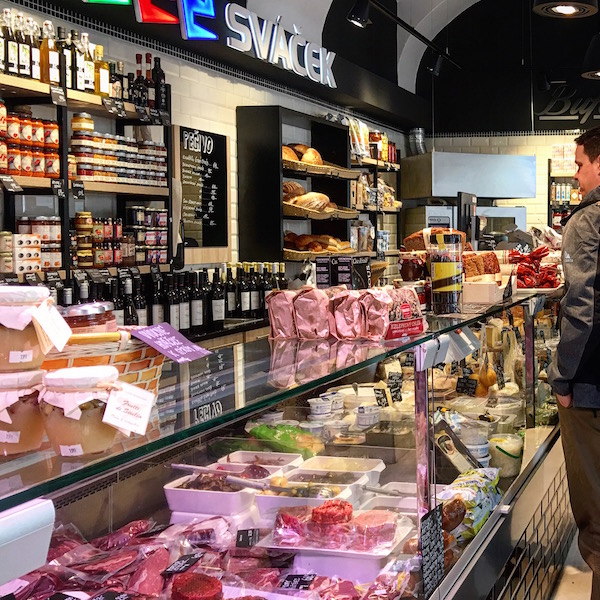
Cafe Oriente
Cafe Oriente is the only cubism cafe in the world. Located on the second floor (first floor for Europeans) of the House of the Black Madonna, above the Cubism Museum, it’s a house dedicated to the cubism movement in architecture, furniture, and pottery. Spiral stairs lead to the cafe with cubist bar and light fixtures.
After just 10 years, Cafe Oriente was forced to close in the 1920s when cubism was no longer fashionable. Fully restored in 2005, Cafe Oriente is a delight to those who love a cafe with uncluttered open spaces. The green interior is refreshing, and the large windows and the overall quirky look is worth a visit.
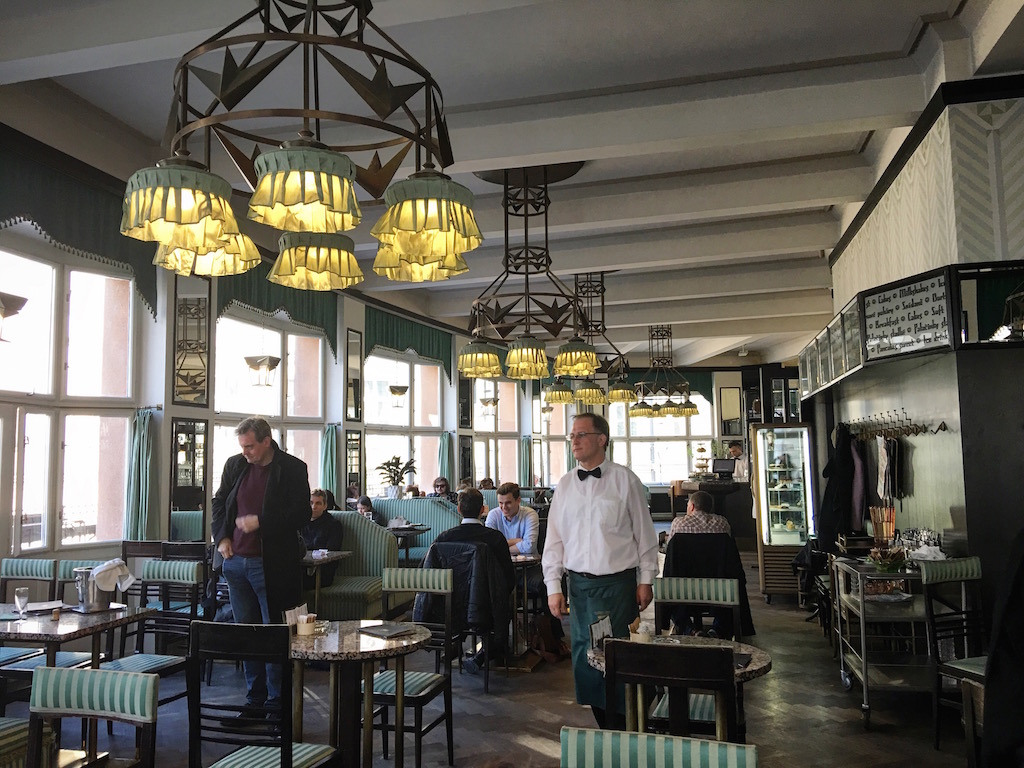
Cafe Oriente has 14 types of coffee. Here we tried Turkish coffee (Turecka kava), a must-try when in Prague. Czech-style Turkish coffee is prepared simply by placing the desired amount of ground coffee in a mug and adding hot water. Let it sit for a few minutes, and the coffee is ready.
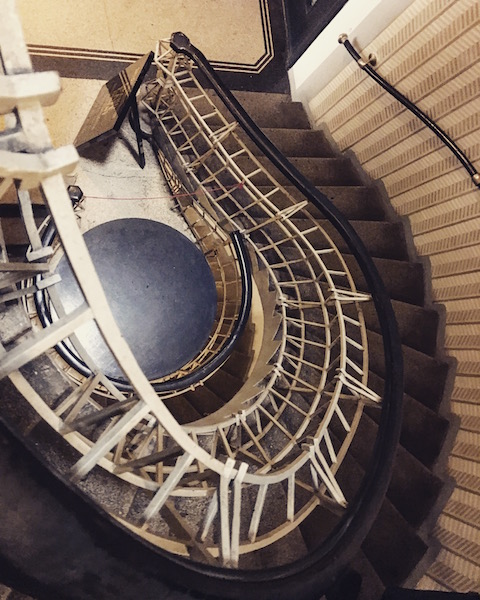

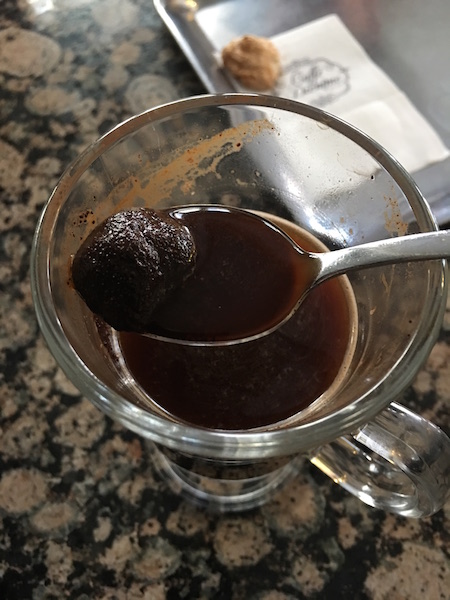
Thinking about joining a cafe tour in Prague?
Here are two to choose from:
- Context Travel Prague Cafe Tour
- Viator Prague Small Group Cafe Tour
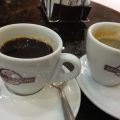
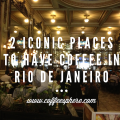
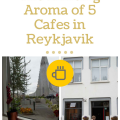
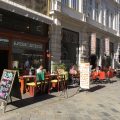
[…] the afternoon we joined a cafe tour with Context Travel. To read about the visit, please read Prague Cafe: Places for Caffeine, Creativity, and Conversation. Here are a few photographs taken during the three-hour tour with […]